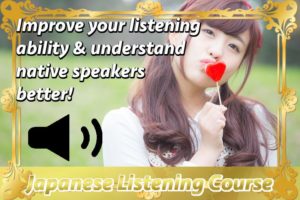年齢 vs. 年代:Don’t You Think They Are The Same?
What is the difference between “年齢(nenrei) and 年代(nendai)”? Which is can you show your age? After reading this, you would be answering this question. Let me introduce what their subtle differences are and how you correctly use them such as native speakers today!
[wp-svg-icons icon=”checkmark-circle” wrap=”i”] 年齢(nenrei)
[wp-svg-icons icon=”arrow-right-2″ wrap=”span”] Age (Lifetime) / 年龄 / 나이 / Tuổi
“年齢(nenrei)” means “Age (Lifetime)” and which has been used as the meaning of “the length of an existence extending from the beginning to any given time”. The basic ways to use them are that “私の年齢は___だ。(My age is ___.)”, etc For instance, “私の年齢は20だ。(My age is 20.)”, etc. The tips for using it are that “年齢” is used as the meaning of “SOMEONE’S AGE such as 10, 15, 20, 30, 40, etc”, unlike “年代“. Everyone could use “年齢” as casual, polite and formal such as “年齢は20です。(My age is 20.)” as casual and “私の年齢は20です。(My age is 20.)” as polite and formal.
先生の年齢知ってる? (Do you know what our teacher’s age is?) (你知道老师的年龄吗?) (선생님 나이 알아?) (Bạn có biết tuổi của thầy/ cô không?)
[/voice]
[voice icon=”http://jpyokoso.com/wp-content/uploads/2018/04/learn-japanese-online-how-to-speak-japanese-language-for-beginners-basic-study-in-japan-okawa31.jpg” name=”たつや” type=”r icon_blue” sample”]
うん、30歳でしょ? (Yeah, he’s 30, right?) (知道啊,30岁对吧?) (응, 30살일걸?) (Ừ, thầy/cô 30 tuổi phải không?)
[/voice]
[wp-svg-icons icon=”headphones” wrap=”i”] LISTENING COURSE Sample [wp-svg-icons icon=”headphones” wrap=”i”]
[wp-svg-icons icon=”spades” wrap=”i”]
Beginner
[voice icon=”http://jpyokoso.com/wp-content/uploads/2018/04/learn-japanese-online-how-to-speak-japanese-language-for-beginners-basic-study-in-japan-okawa70.jpg” name=”たつや” type=”l icon_blue” sample”]
あの子の年齢を知りたいです。 (I would like to know her age.) (我想知道那个人的年龄。) (그 아이의 나이를 알고 싶습니다.) (Tôi muốn biết tuổi của đứa trẻ đó.)
[/voice]
[wp-svg-icons icon=”checkmark-circle” wrap=”i”] 年代(nendai)
[wp-svg-icons icon=”arrow-right-2″ wrap=”span”] Age (Era / Period) / 年代 / 연령대 / Tuổi/ thập niên
“年代(nendai)” means “Age (Era / Period)” and which has been used as the meaning of “a particular period in time”. The basic ways to use them are that “___年代“, etc. For instance, “90年代(nineties), “1600年代(the 1600s)”, “2010年代(the two-thousand tens.)”, etc. The tips for using it are that “年代” is used as the meaning of “PARTICULAR PERIOD OF TIME such 80s, 90s, 2010s, etc”, unlike “年齢“. Everyone could use “年代” as casual, polite and formal such as “そのバンドは90年代に大ヒットしたよ。(The band was a huge hit in the 90s.)” as casual and “そのバンドは90年代に大ヒットしました。(The band was a huge hit in the 90s.)” as polite and formal.
その曲有名なの? (Is that a famous song?) (这首歌很有名吗?) (그 노래 유명한 거야?) (Bài hát đó có nổi tiếng không?)
[/voice]
[voice icon=”http://jpyokoso.com/wp-content/uploads/2018/06/learn-japanese-online-how-to-speak-japanese-language-for-beginners-basic-study-in-japan-okawa96.jpg” name=”たつや” type=”r icon_blue” sample”]
すごく有名だよ。僕たちぐらいの年代の人なら誰でも知ってるよ。 (Very! Everyone my age knows this song!) (非常有名呢。我们这个年代的人都知道哦。) (굉장히 유명해. 우리 정도 연령대의 사람이라면 누구나 알고 있어.) (Rất nổi tiếng đấy. Những người trong thời đại cỡ tuổi tôi ai cũng biết hết đấy.)
[/voice]
[voice icon=”http://jpyokoso.com/wp-content/uploads/2018/04/learn-japanese-online-how-to-speak-japanese-language-for-beginners-basic-study-in-japan-yuka74.jpg” name=”ゆか” type=”l icon_red” sample”]
幅広い年代の人に知ってもらいたいです。 (I ‘d like people of all ages to know about it.) (我希望让广大年龄层的人都知道。) (폭넓은 연령층의 사람들이 알아주었으면 좋겠습니다.) (Tôi muốn được biết nhiều người ở nhiều độ tuổi khác nhau.)
[/voice]
[voice icon=”http://jpyokoso.com/wp-content/uploads/2018/04/learn-japanese-online-how-to-speak-japanese-language-for-beginners-basic-study-in-japan-okawa22.jpg” name=”たつや” type=”l icon_blue” sample”]
このスタイルは90年代初めに流行ってました。 (This style was in fashion in the early 90s.) (这种风格在20世纪90年代初非常流行。) (이 스타일은 90년대 초에 유행했습니다.) (Phong cách này đã trở thành trào lưu vào đầu thập niên 90.)
[/voice]
[kanren postid=”17579″]
[kanren postid=”17550″]
[kanren postid=”17549″]
[kanren postid=”17508″]
 |  |

Comments